

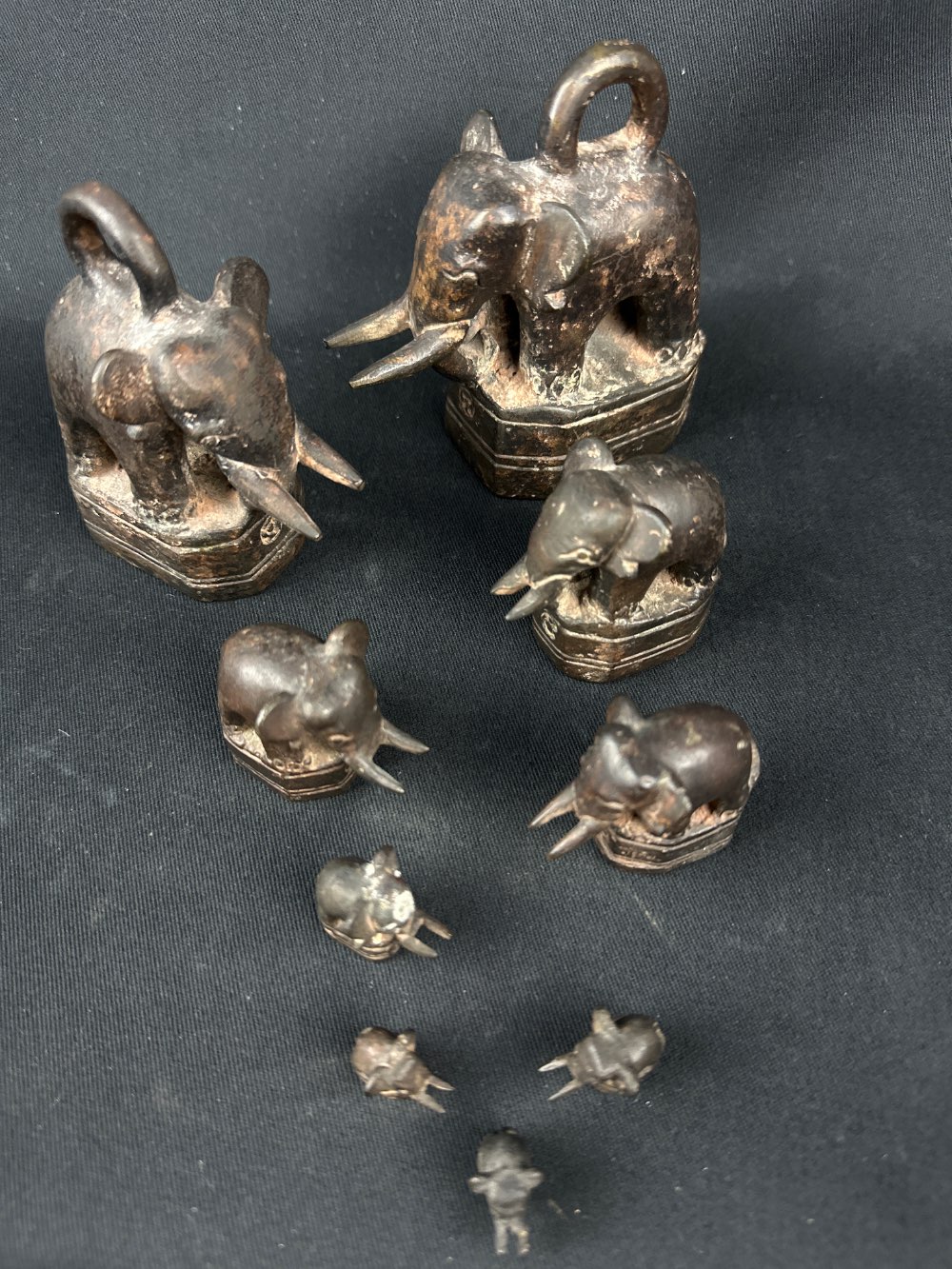
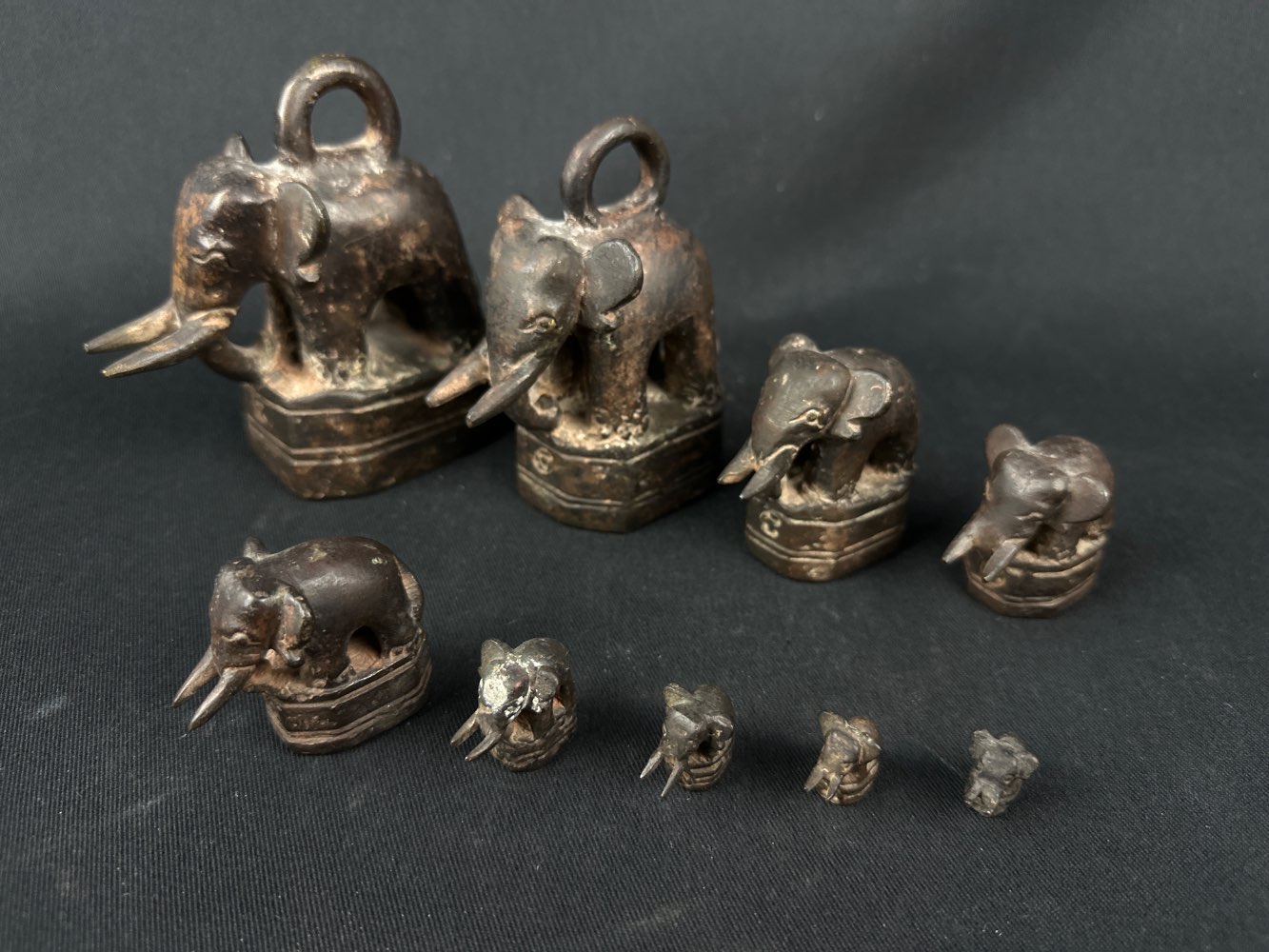
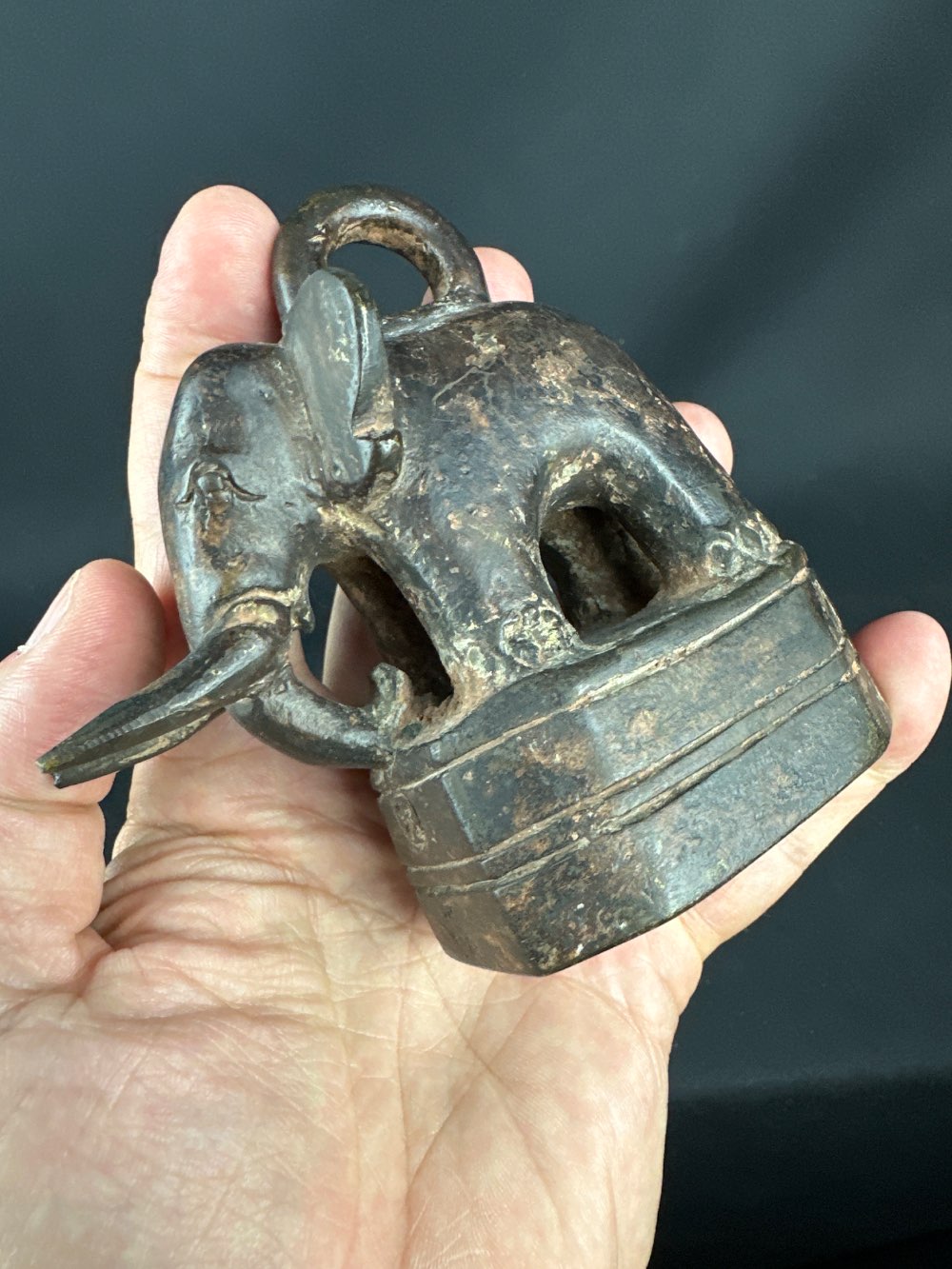
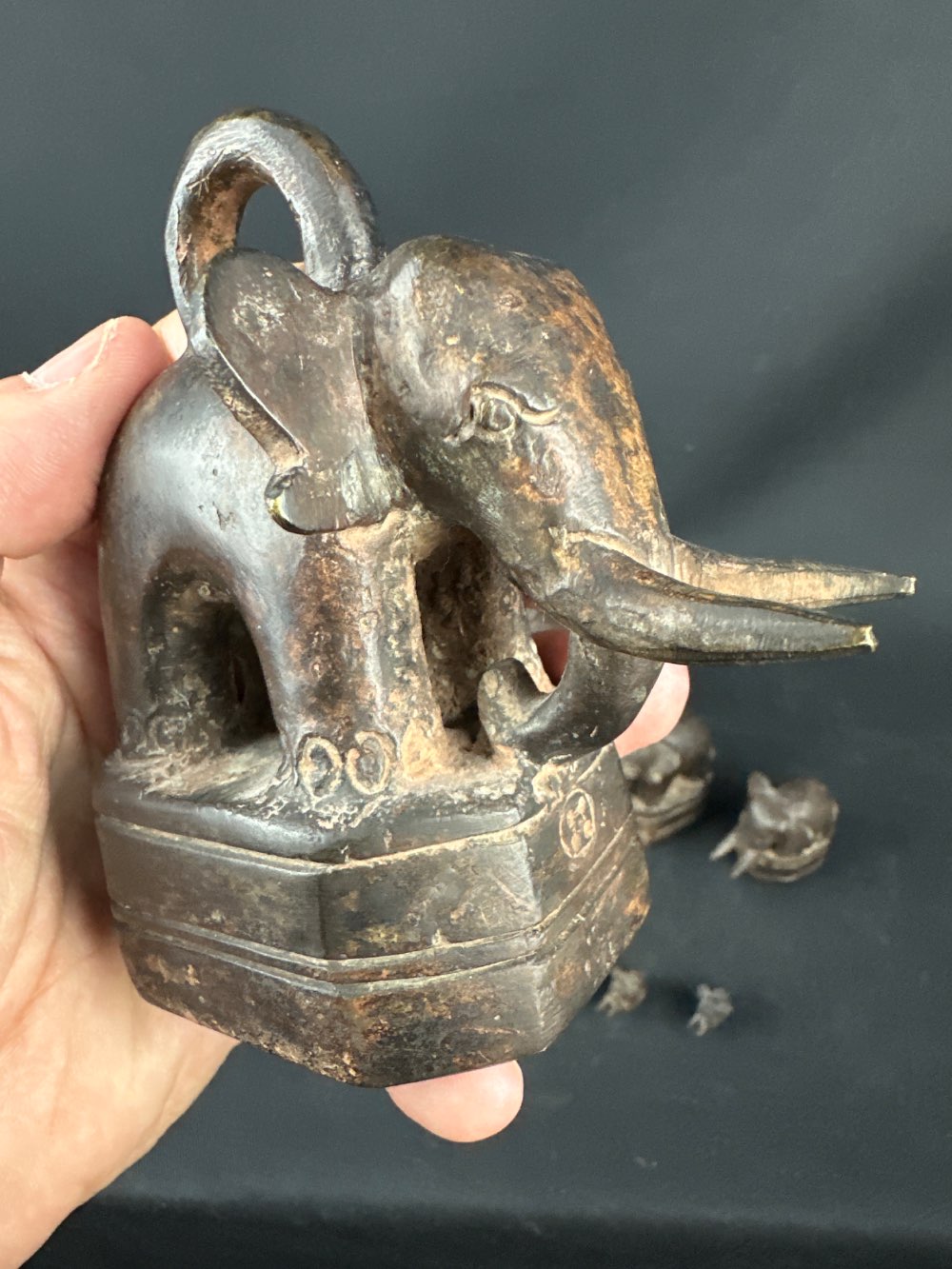
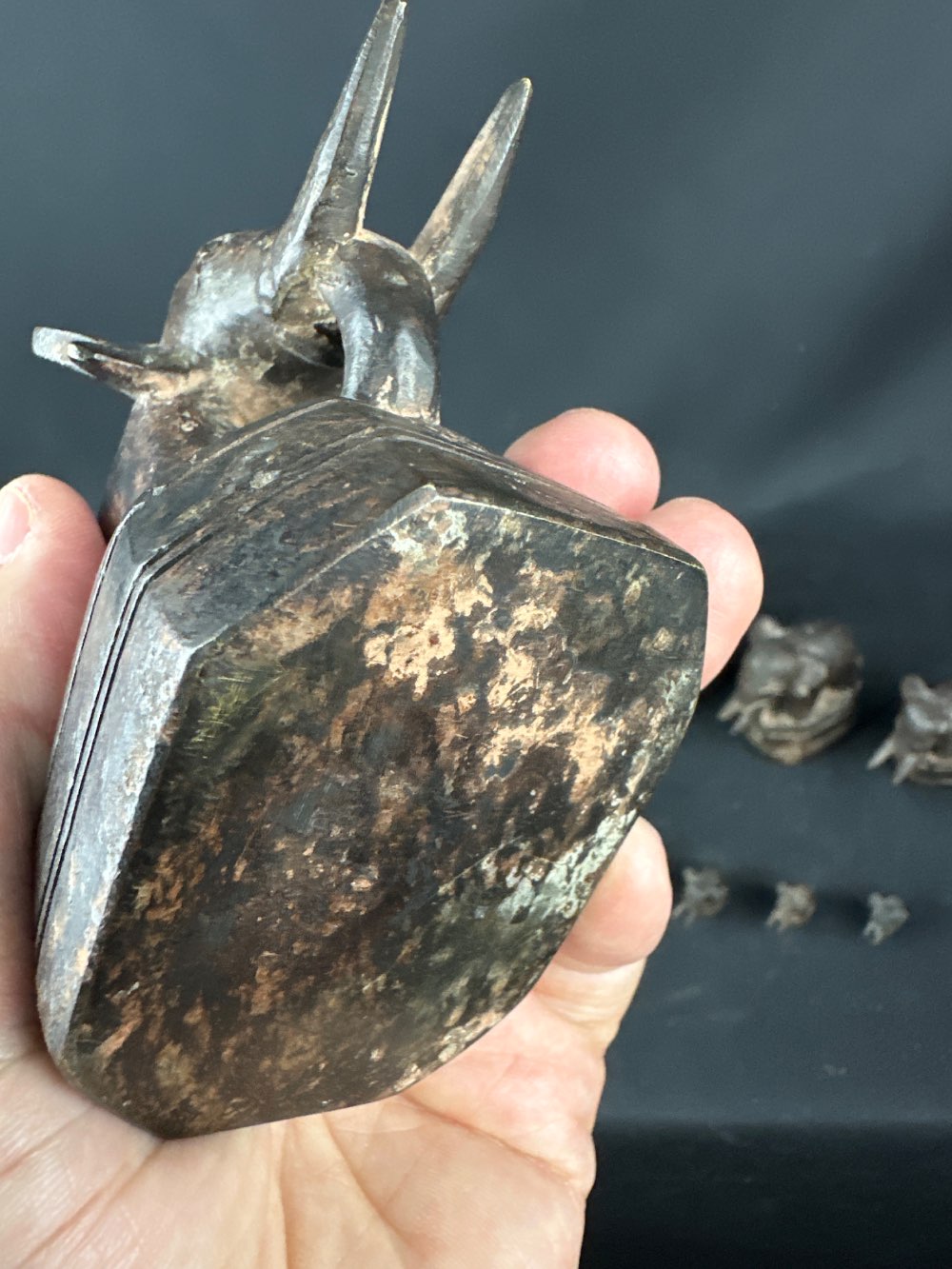
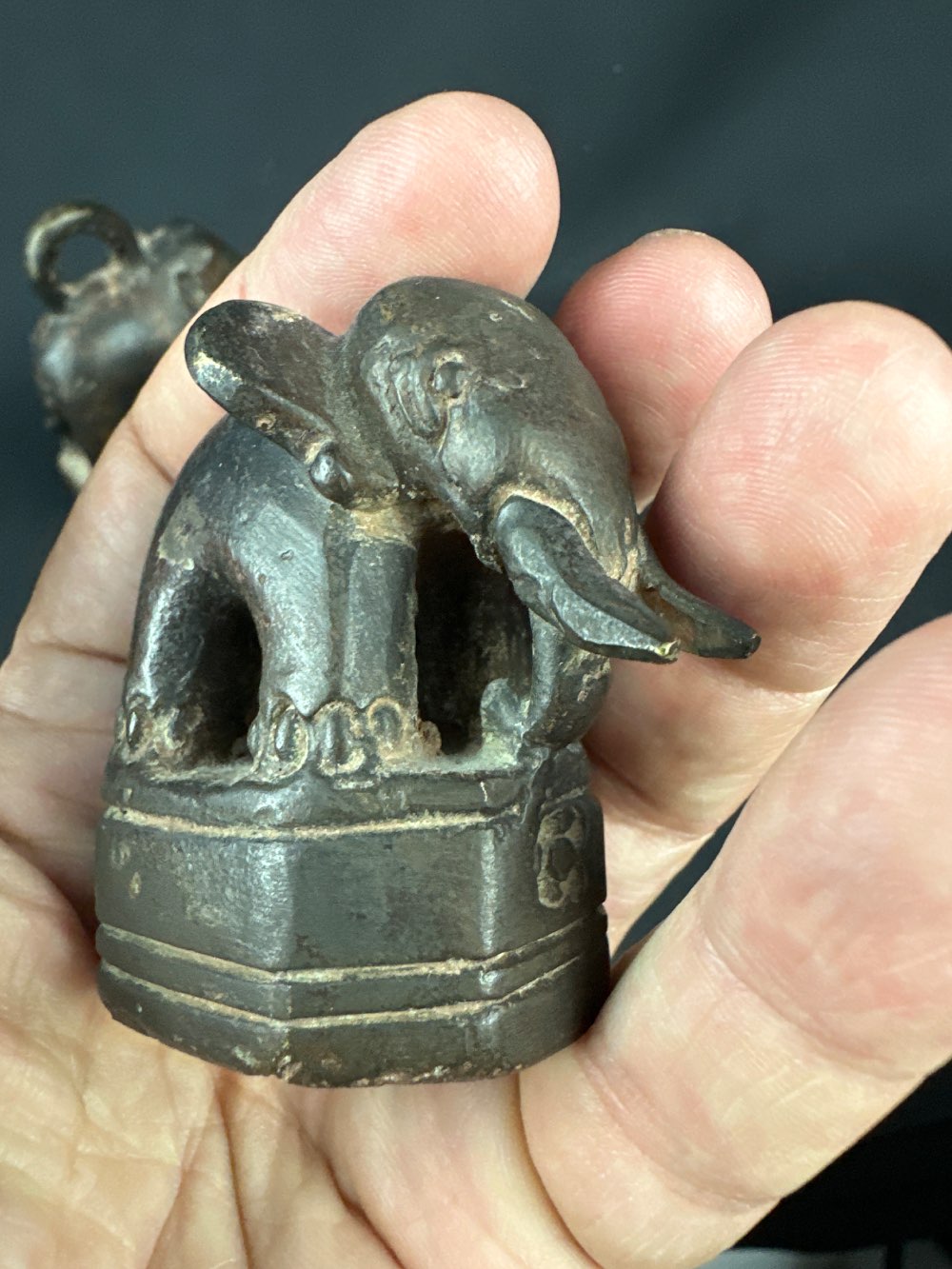
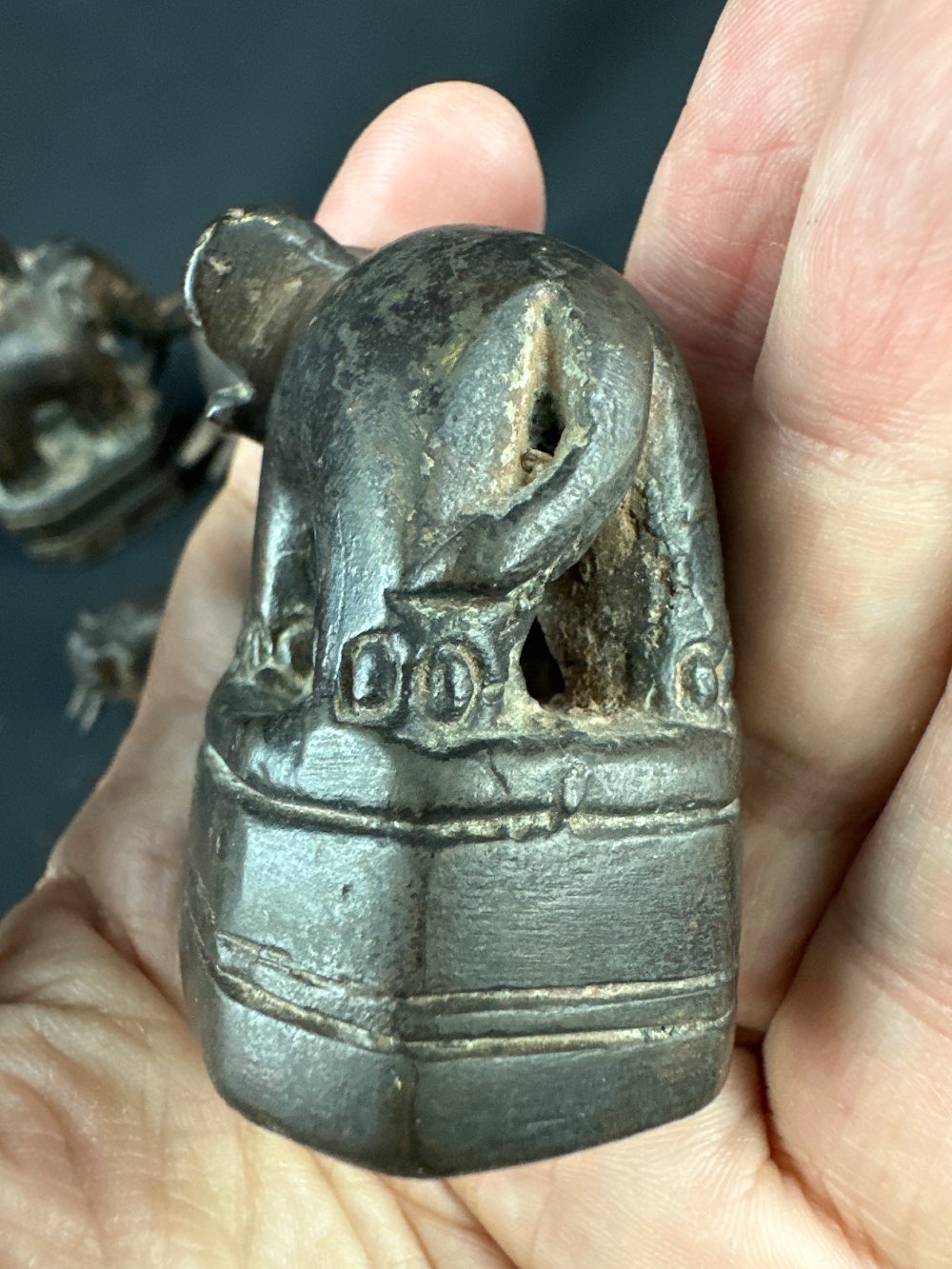
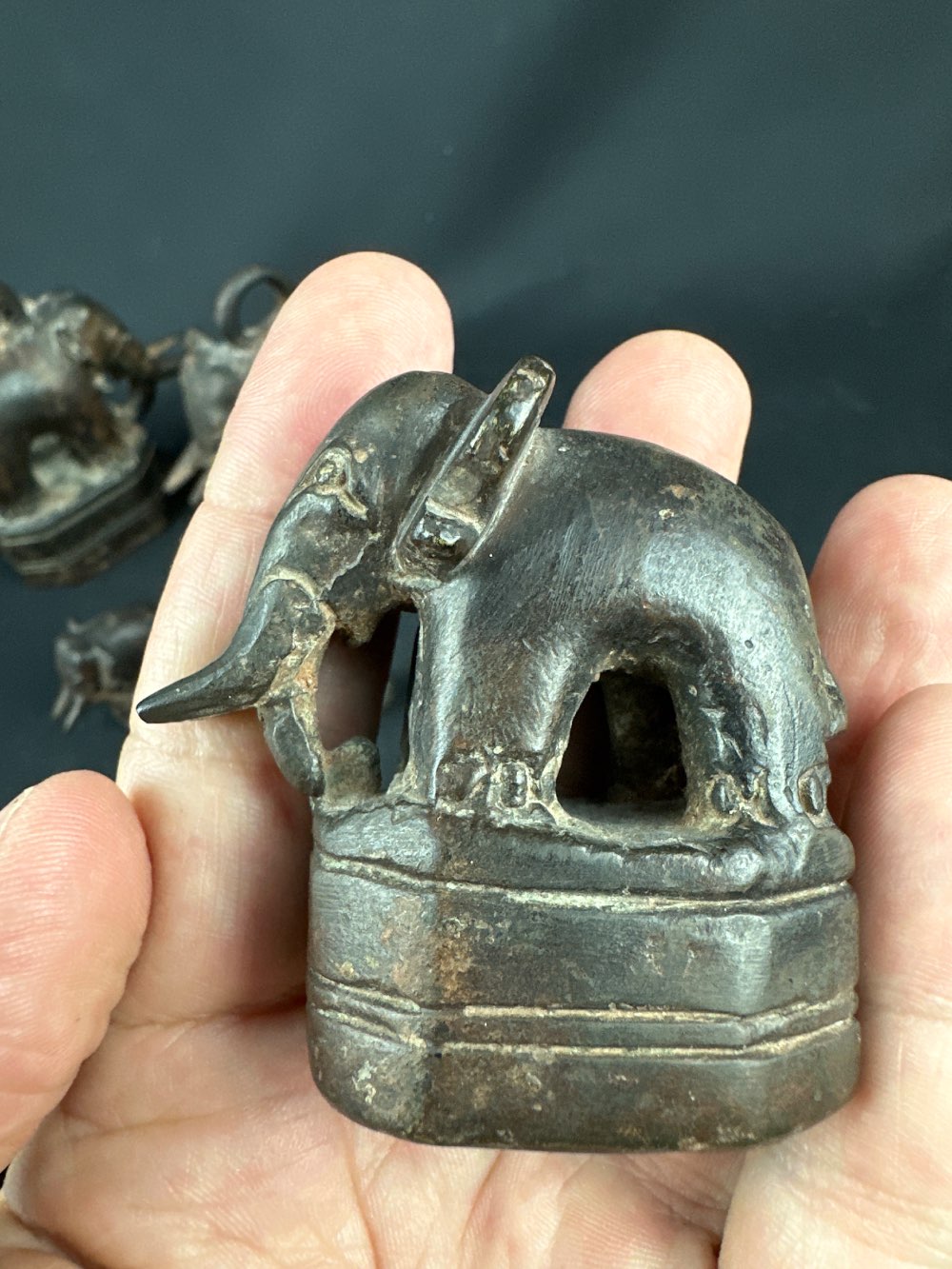
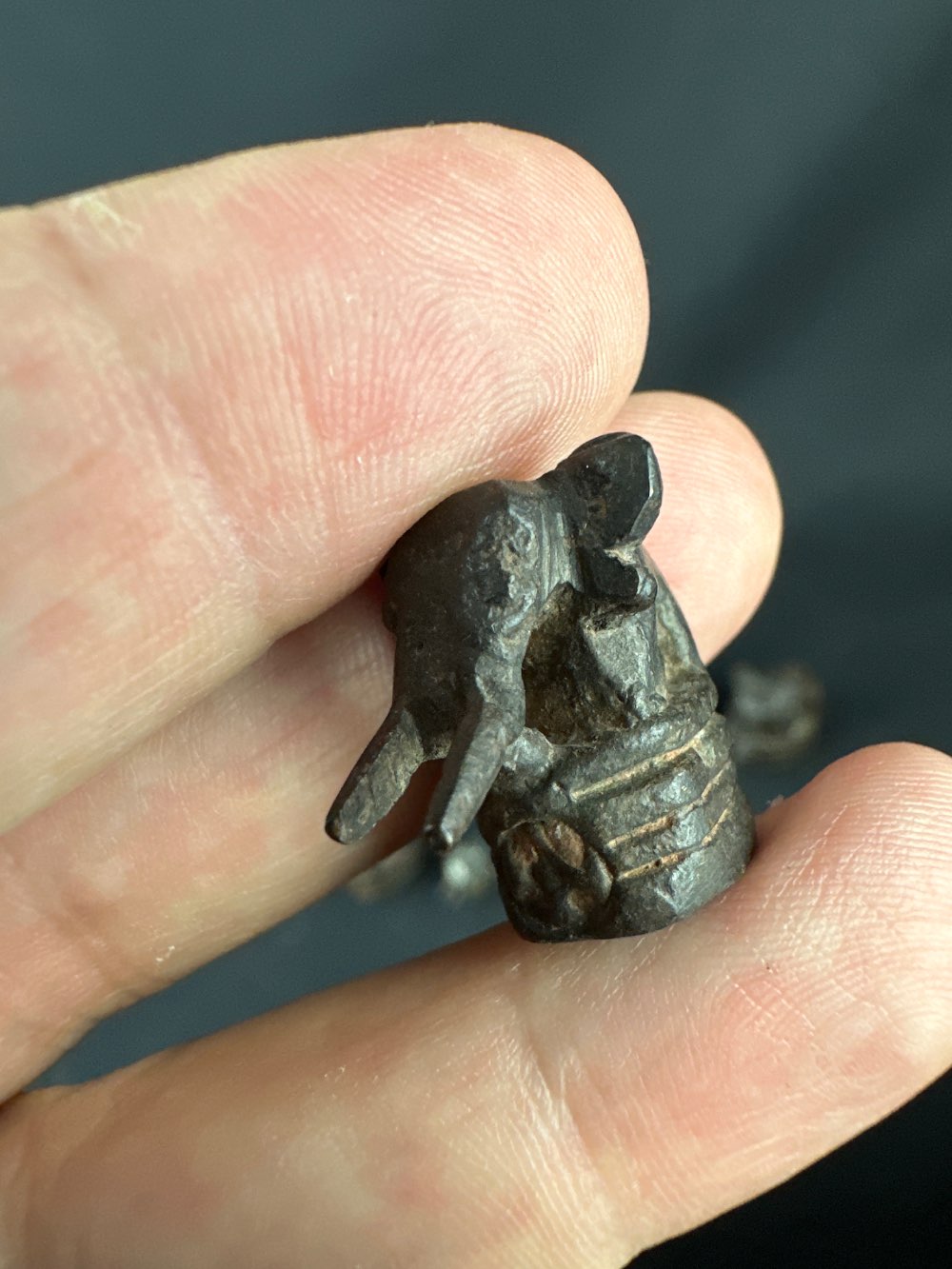
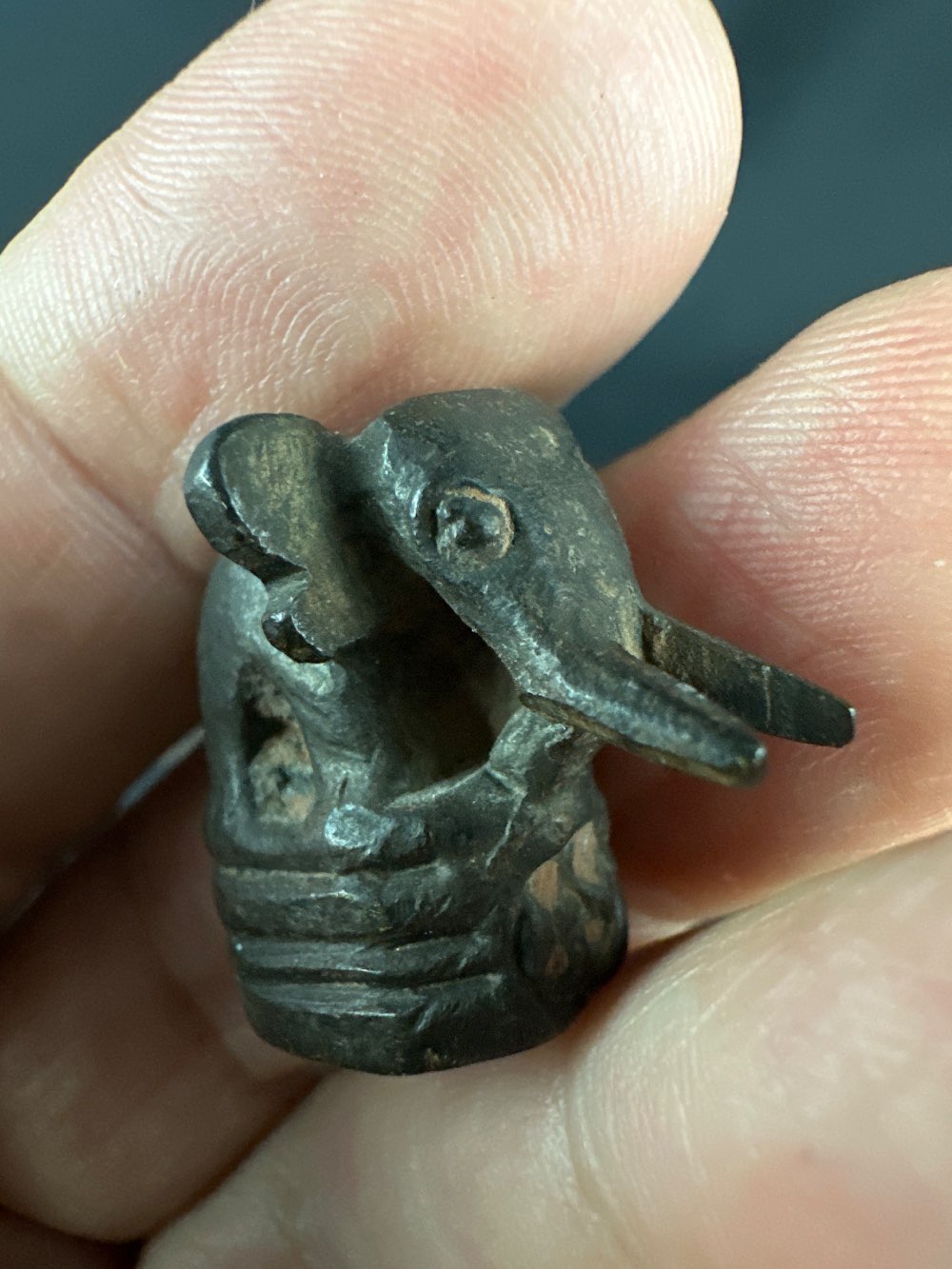
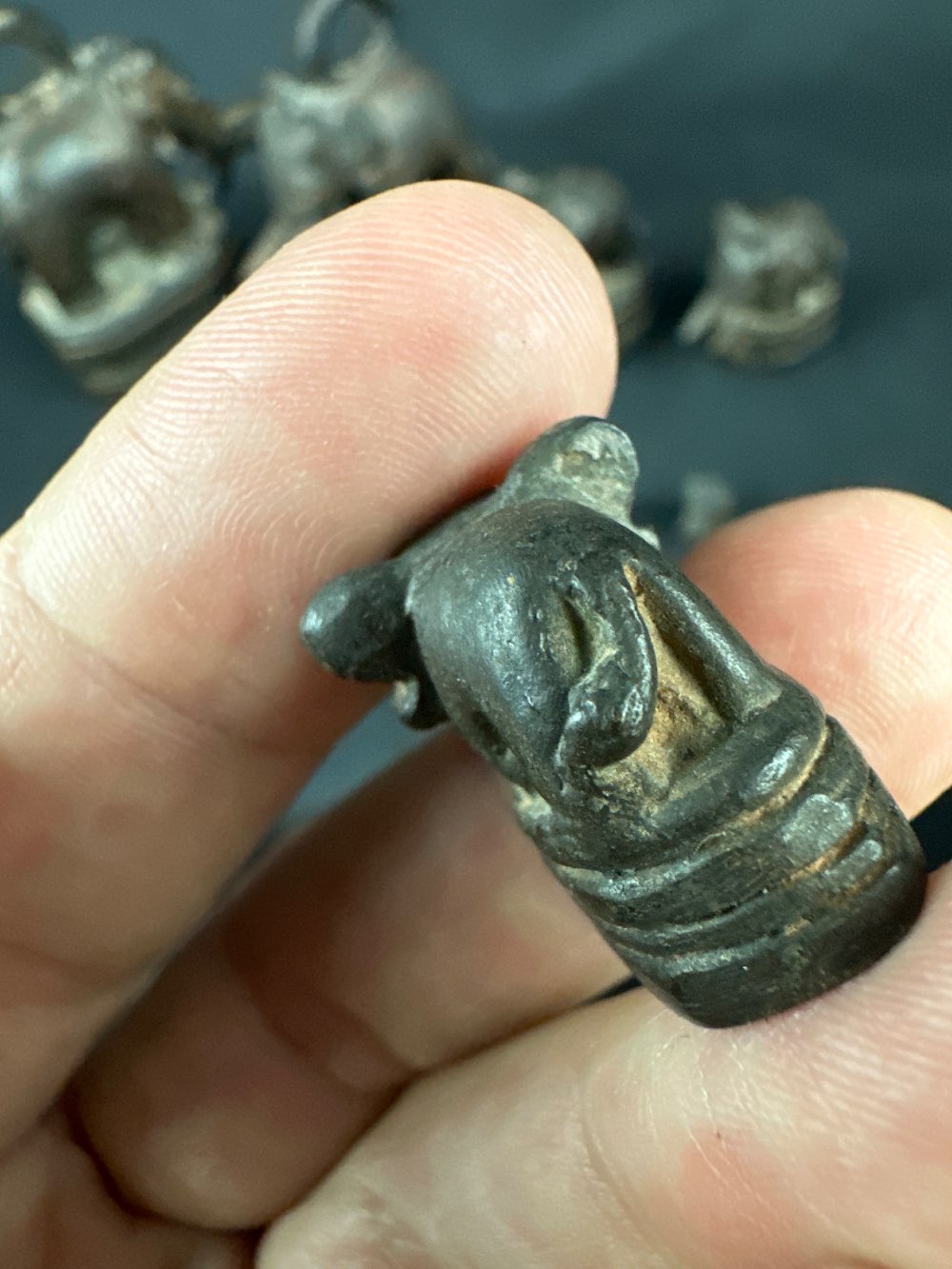
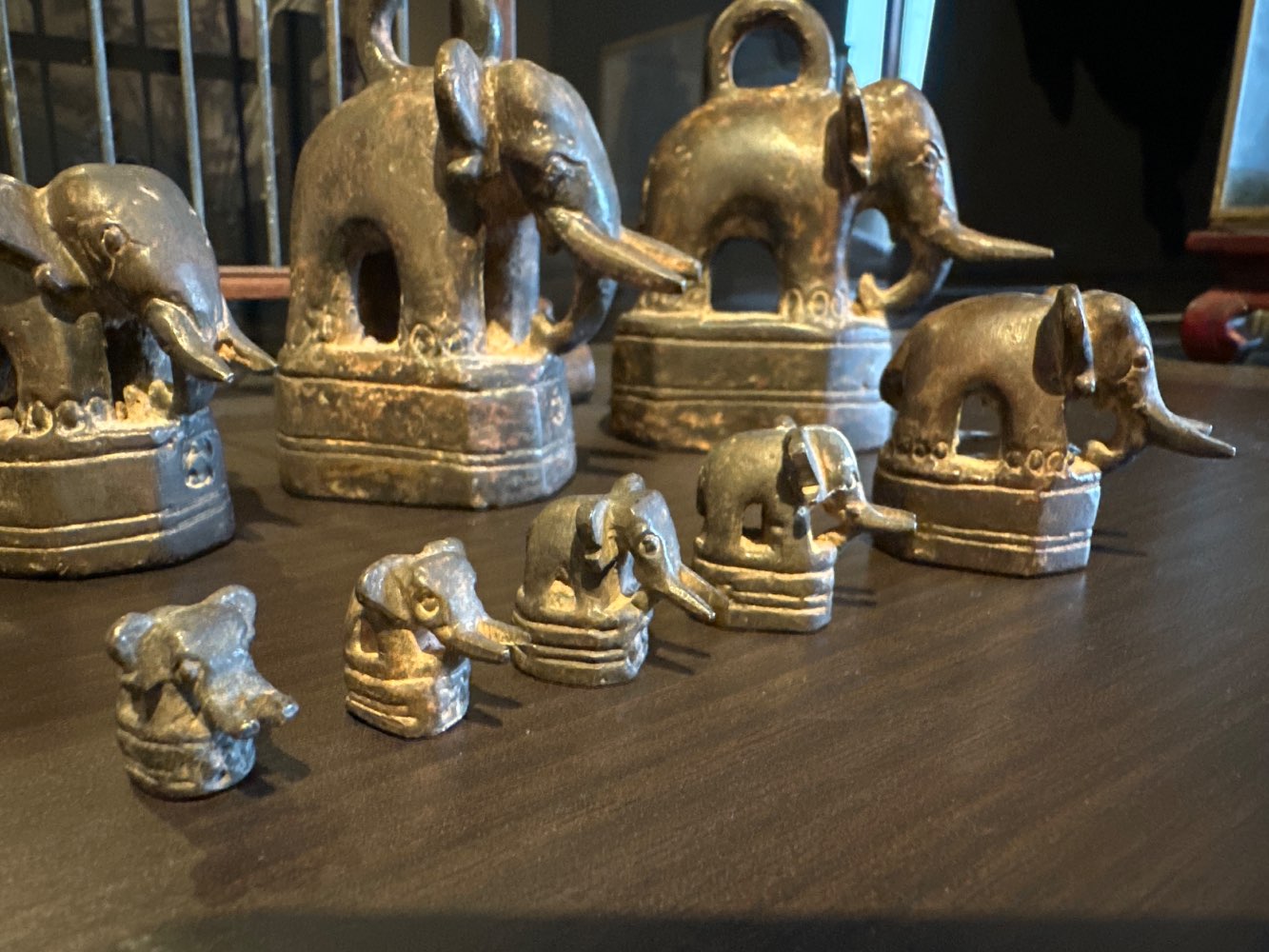
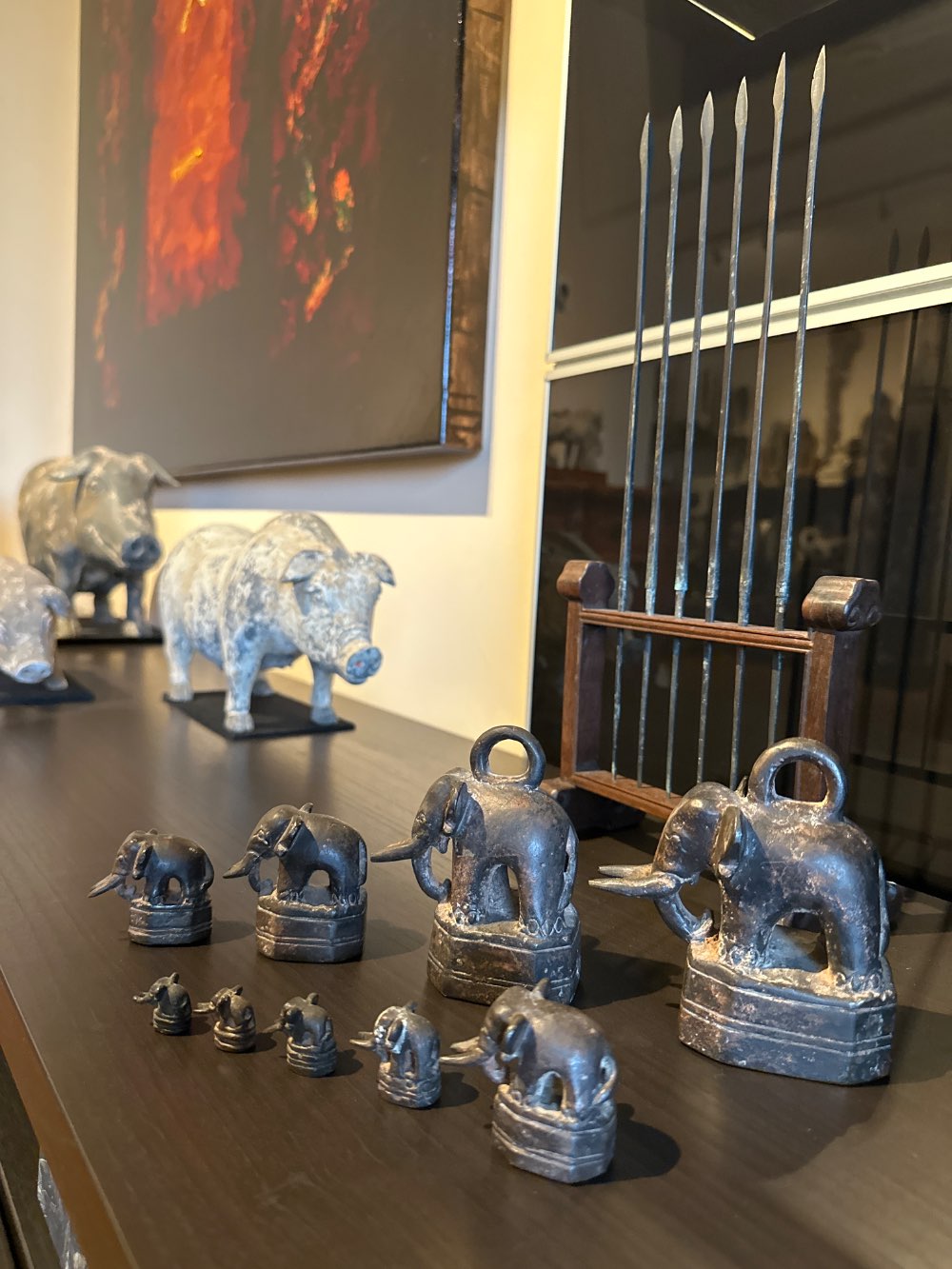
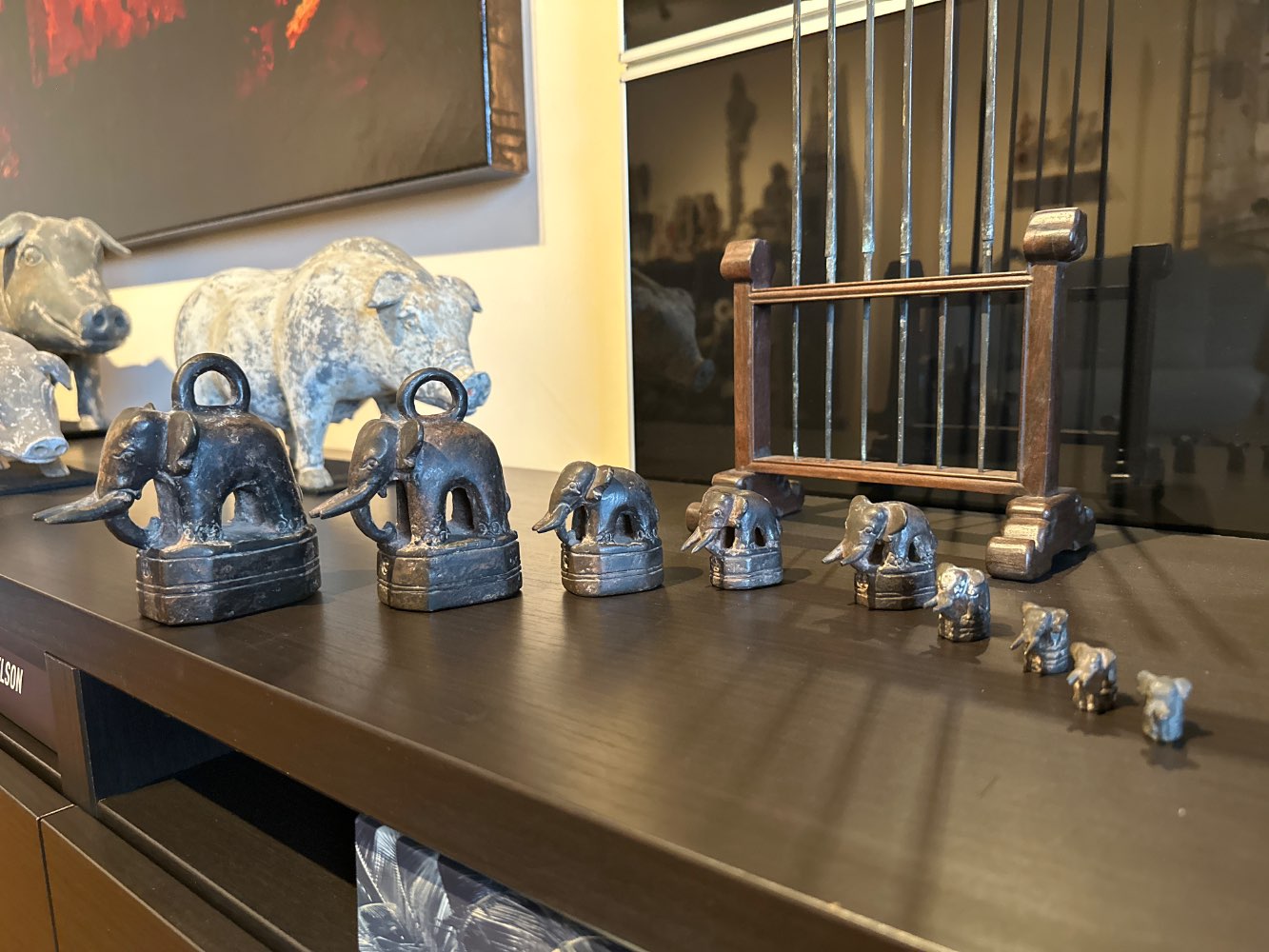
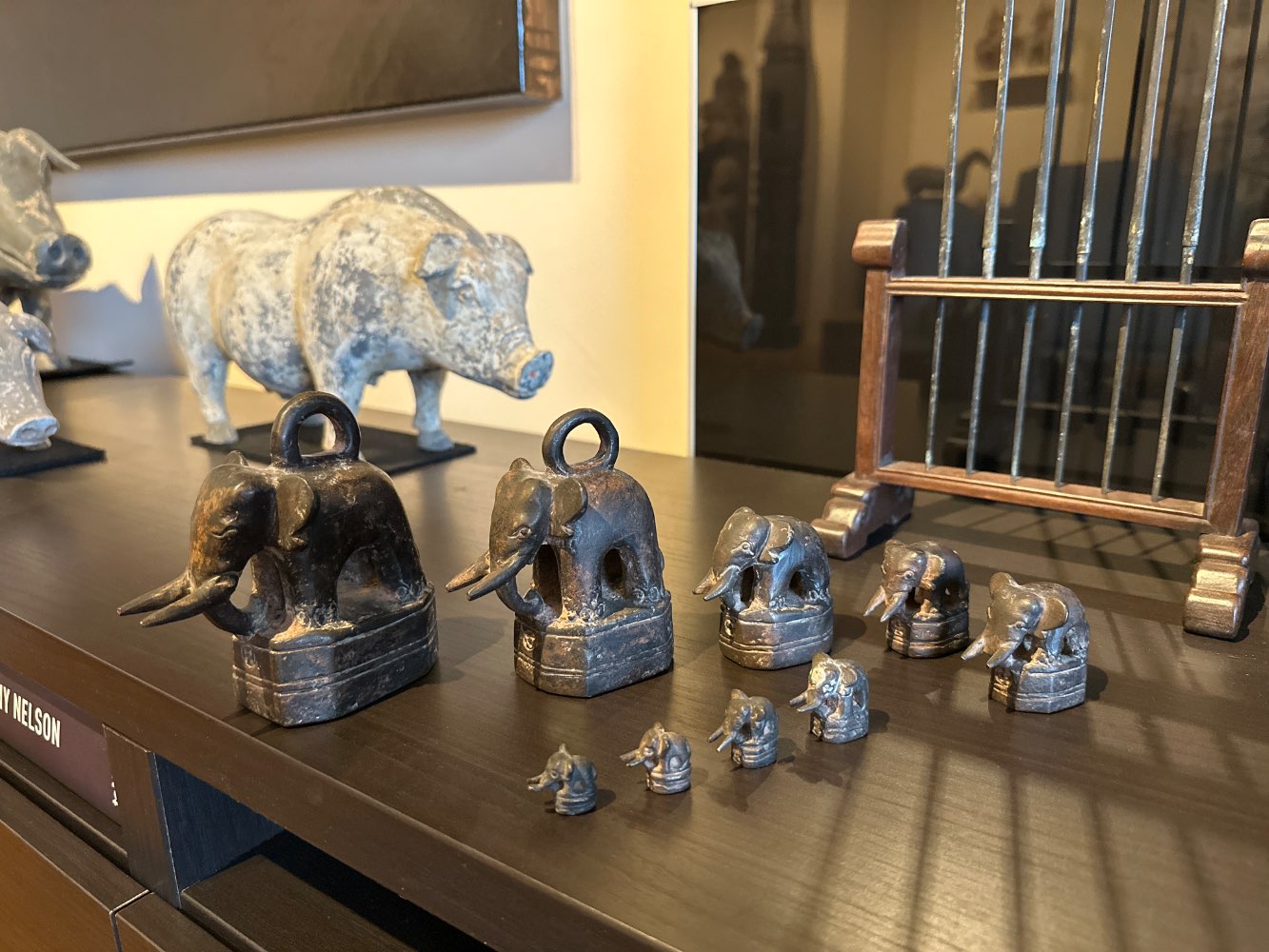
Set of 9 elephant opium weights of bronze from Thailand/Birma, 19th century or older
Set of 9 elephant opium weights of bronze from Thailand/Birma, 19th century or older
- Country: Birma
- Period: 19th century, but probably older
- Material: copper alloy
- Great set of 9 weights and sets like this are a rare find
- The elephants are very detailed
Size and weight:
1. 104 mm - 1,388 gram
2. 97 mm - 926 gram
3. 56 mm - 372 gram
4. 41 mm - 178 gram
5. 42 mm - 164 gram
6. 25 mm - 32 gram
7. 21 mm - 18 gram
8. 18 mm - 12 gram
9. 16 mm - 10 gram
________________________________________________________________________________________
Bronze opium weights are fascinating historical artifacts from Southeast Asia, primarily used between the 14th and early 20th centuries, especially in regions like Burma (Myanmar), Laos, Thailand, and Yunnan (China). Here's a detailed overview:
What Are Opium Weights?
Opium weights were small metal weights, often made of bronze, used to weigh opium, precious metals, spices, and other trade goods. Despite the name, they weren’t exclusively for opium — that term became common in the West due to their association with opium trade.
Main Regions of Use:
- Burma (Myanmar) – the most well-known origin, especially the Shan States and Ava Kingdom.
- Northern Thailand – including the Lanna Kingdom.
- Laos and Yunnan (southern China) – for similar trade purposes.
Common Shapes & Symbolism:
These weights often took the form of stylized animals — especially in Burma, where they followed Buddhist or astrological symbolism.
- Hintha (Hamsa) – a mythical bird, very common.
- Chinthe – a lion-like creature.
- Elephants, bulls, ducks, toads, etc. – depending on the period and region.
Each design had symbolic, religious, or protective meaning, often reflecting Buddhist cosmology or zodiac signs.
Standardization:
- Weights were based on local systems like the kyat, tical (about 16.3g), and viss (about 1.63kg).
- They were strictly regulated by royal decree, especially in Burma — some weights were marked with official stamps to indicate authenticity.
- Used by merchants, tax collectors, and temples for trade and offerings.
Why Called “Opium” Weights?
- European traders and colonial officials saw them used to weigh opium (a major export in the region), so the term "opium weight" stuck — though they were more broadly used.
Summary:
Bronze opium weights are not just trade tools — they’re windows into the economy, religion, and art of pre-modern Southeast Asia. Their animal forms blend practicality with spiritual meaning and they reflect the cross-cultural currents of the Golden Triangle region where trade, Buddhism, and empire met.
Please send an e-mail via below form, WhatsApp or call to order or get more information about this object.
We can communicate in English, Deutsch and Nederlands!
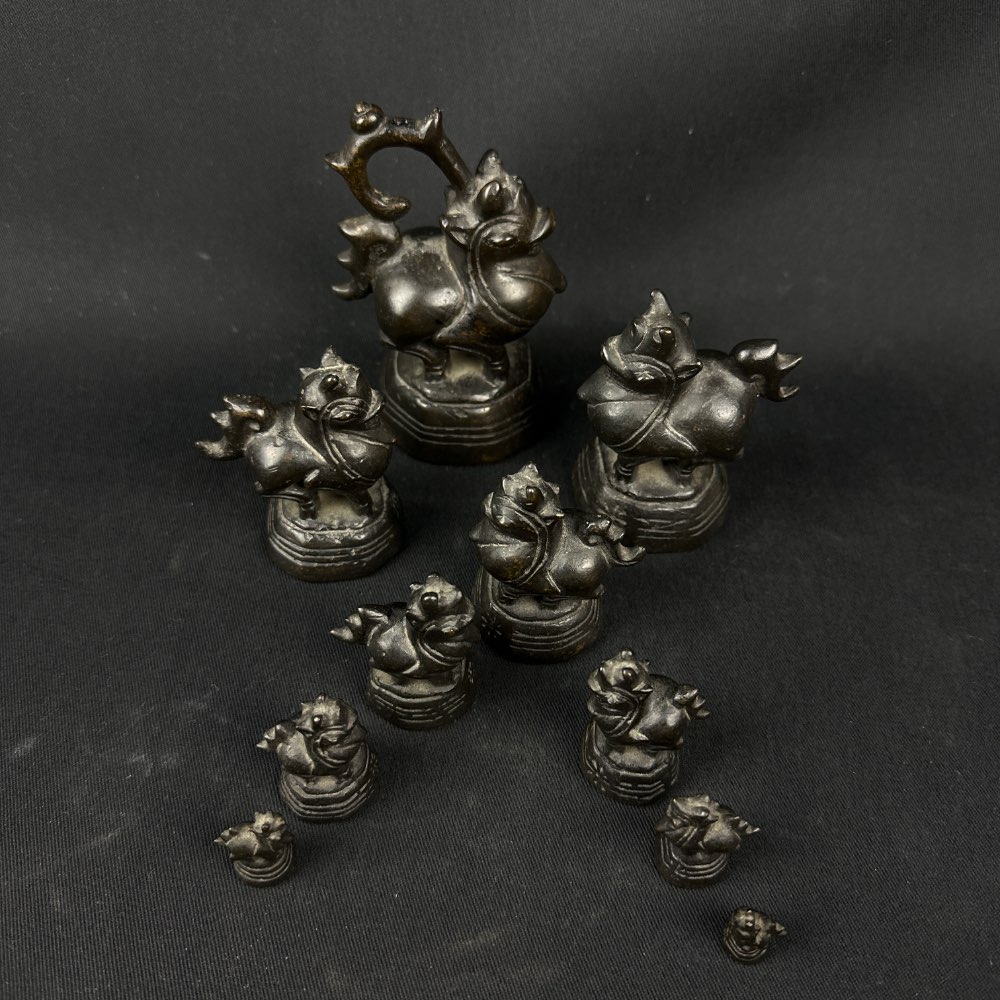 Set of 10 Hintha/Hamsa bird opium weights of bronze from Birma, 19th century or older
Set of 10 Hintha/Hamsa bird opium weights of bronze from Birma, 19th century or older